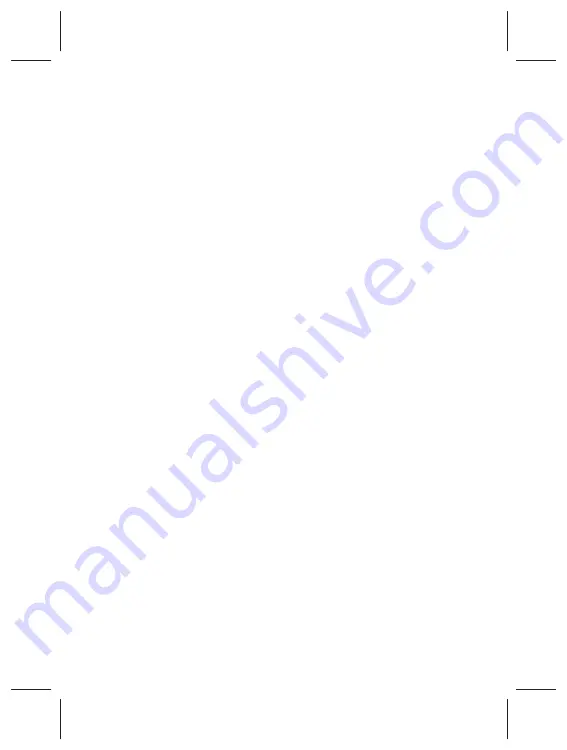
64
An
These products meet the requirements of
EN149:2001+A1:2009, filtering facepiece respirators
for use against particles. They should be used to
protect the wearer from solid and non-volatile liquid
particles only.
^
Particular attention should be given to
warning statements where indicated.
^
WARNINGS AND LIMITATIONS
Always be sure that the complete product is:
- Suitable for the application;
- Fitted correctly;
- Worn during all periods of exposure;
- Replaced when necessary.
• Proper selection, training, use and appropriate
maintenance are essential in order for the
product to help protect the wearer from certain
airborne contaminants.
Failure to follow all
instructions on the use of these respiratory
protection products and/or failure to properly
wear the complete product during all periods of
exposure may adversely affect the wearer’s
health, lead to severe or life threatening illness or
permanent disability.
• For suitability and proper use follow local
regulations, refer to all information supplied or contact
an occupational hygienist, safety professional or 3M
representative on the Tech Assist Helpline 3M
Australia 1800 024 464, 3M New Zealand 0800 364
357.
• Before use, the wearer must be trained in use of the
complete product in accordance with applicable
Health and Safety standards/guidance.
• These products do not contain components made
from natural rubber latex.
• These products do not protect against
gases/vapours.
• Do not use in atmospheres containing less than
19.5% oxygen. (3M definition. Individual countries
may apply their own limits on oxygen deficiency. Seek
advice if in doubt).
• Do not use for respiratory protection against
atmospheric contaminants/concentrations which are
unknown or immediately dangerous to life and health
(IDLH).
^
Do not use with beards or other facial hair that
may inhibit contact between the face and the
product thus preventing a good seal.
• Leave the contaminated area immediately if:
a) Breathing becomes difficult.
b) Dizziness or other distress occurs.
• Discard and replace the respirator if it becomes
damaged, breathing resistance becomes excessive
or at the end of the shift.
• Dispose in accordance with local regulations
• Do not alter, modify, clean or repair this respirator.
• In case of intended use in explosive atmospheres,
contact 3M.
• Before initial use, always check that the product is
within the stated shelf life (use by date).
FITTING INSTRUCTIONS
See Figure 1.
Before fitting device, ensure hands are clean.
All respirator components should be inspected for
damage prior to each use.
1. With the respirator closed, shape the nosepiece as
shown.
2. Open respirator, press in the central front panel
and pinch the two points together as shown.
3. Cup respirator in one hand with open side towards
face. Take both straps in other hand. Hold respirator
under chin, with nosepiece up, and pull straps over
head.
4. Locate the upper strap across the crown of the
head and the lower strap below the ears. Straps must
not be twisted.
5. Using both hands, mould noseclip to the shape of
the lower part of the nose to ensure a close fit and
good seal. Pinching the noseclip using only one hand
may result in less effective respirator performance.
6. The seal of the respirator on the face should be
fit-checked before entering the workplace.
FIT CHECK
1. Cover the front of the respirator with both hands
being careful not to disturb the fit of the respirator.
2a) UNVALVED respirator - EXHALE sharply;
2b) VALVED respirator - INHALE sharply.
3. If air leaks around the nose, re-adjust the noseclip
to eliminate leakage. Repeat the above fit check.
4. If air leaks at the respirator edges, work the straps
back along the sides of the head to eliminate leakage.
Repeat the above fit check.
If you CANNOT achieve a proper fit DO NOT enter
the hazardous area.
See your supervisor.
It is recommended that wearers should be fit tested in
accordance with AS/NZS 1715.
For information regarding fit testing procedures,
please contact 3M.
STORAGE AND TRANSPORTATION
Store in accordance with manufacturer’s instructions,
see packaging.
NOTE
Average conditions may exceed 25°C / 80%
RH for limited periods. They can reach an average of
38°C / 85% RH, provided that this is for no more than
3 months in the shelf life of the product. When storing







































